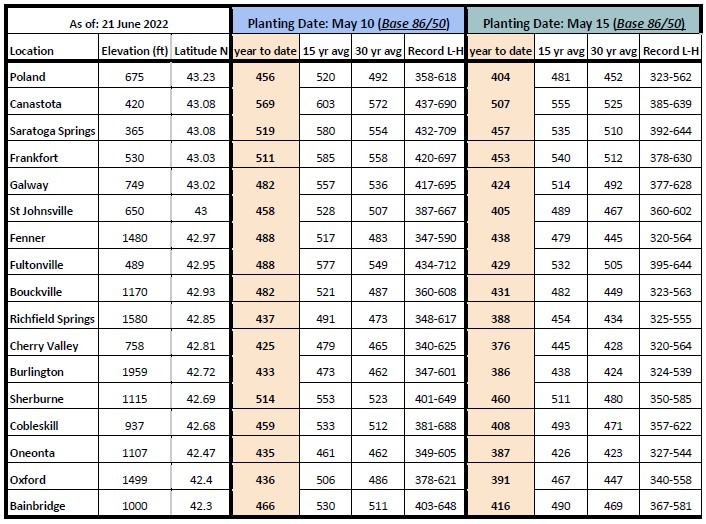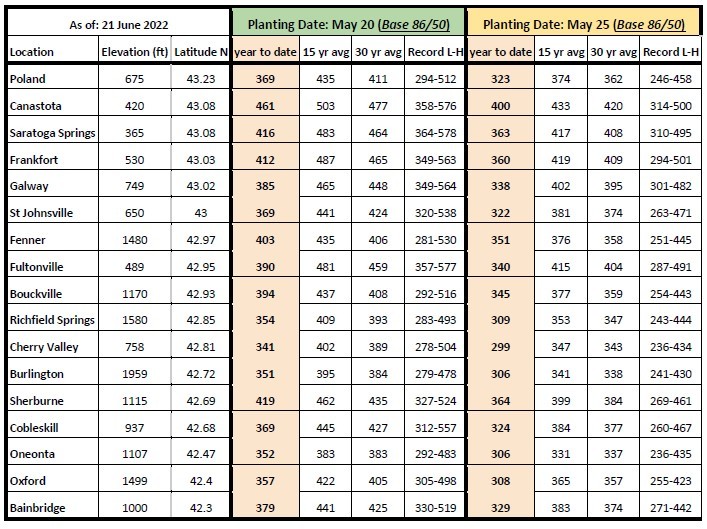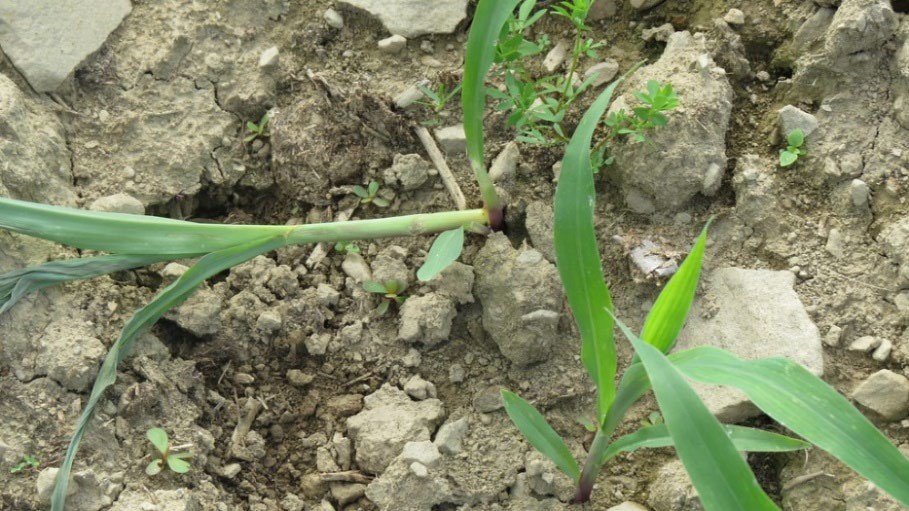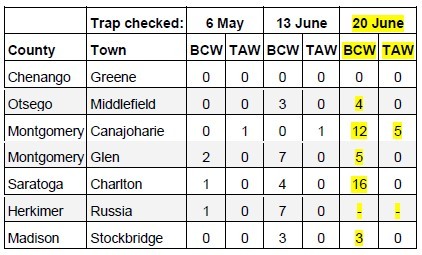Field Crop Update, June 22, 2023
Erik Smith, Area Field Crop Specialist
Central New York Dairy and Field Crops
1. Field Observations
The dry weather played havoc with more than a few corn fields. I'm seeing uneven emergence in both no-till (difficulty getting seed into the ground, getting good seed-soil contact) and conventional tillage (uneven or nonexistent soil moisture). But just as many fields are reaching v6-v7, which is the end of the critical weed-free period.
This drought map should be different by this time next week, when the expected rain will have come just in time for hayfield regrowth.

2. Growing Degree Days (See: Climate Smart Farming Growing Degree Day Calculator)
Growing degree days (GDD) are calculated by taking the average daily temperature and subtracting the base temperature for development of a given organism ((High + Low)/2 - base temp = GDD). For corn silage, we are using base 50/86, as corn development starts at 50 degrees F and ceases above 86. Check your location and planting date:


3. Pest and disease monitoring
Potato Leafhopper and Alfalfa Weevil
Alfalfa weevil numbers are finally waning, so they should not be a factor in 3rd cutting alfalfa. And thankfully, we are still seeing very few leafhoppers (far below threshold). When we have more numbers to report, we'll add that data table here.
Black Cutworm (BCW) and True Armyworm (TAW)
Numbers increased this week, and I have seen some sparse cutworm damage in our region. So continue to check your fields until V6 (~12") for cutworm damage.


Upcoming Events
New York State Fiber Conference
June 9, 2024
Bouckville, NY
Theme for this year: Quality Matters
Announcements
Cash Rent and Custom Harvest Survey
To date, there is limited information available about rental rates and fees for crop harvesting. Farms can use this valuable information for their farm business planning to help improve decision making and profitability.Farmers Can Join MeatSuite For Free!
MeatSuite.com is a free resource provided by Cornell University where NY meat farmers can create a farm profile and list their bulk (wholes, halves, quarters) and bundled (i.e. Grilling Bundle) meat products.Why should farmers join?
1. It's free and easy!
2. Connect with more local customers. In the past year the MeatSuite.com farm directory had 8,300 visits from New York consumers. Farm profiles get as many as 25 views per month from potential local customers. We also spotlight MeatSuite farms on social media and bring attention and purchases to farms through highlights and giveaways.
How do I join?
Farmers can visit https://www.meatsuite.com/farmers/ to create a free farm profile. You must list at least one product for your farm's profile to go live. You'll also have access to Cornell's free Meat Price Calculator, a helpful tool for pricing your meat to make a profit.
While you're on MeatSuite, check out the "Creating Consumer-Friendly Bulk Meats" publication on the log-in page. It has tips on how to create bulk meat products that are easier for first-time buyers to say "yes" to.
If you have any questions as you create your farm profile or products, we're here to help! Please email Matt LeRoux at mnl28@cornell.edu.




